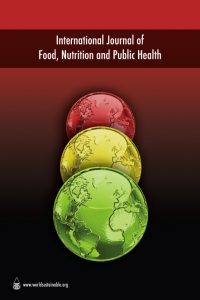The effects of fermentation on the nutritional and medicinal improvements of green and oolong tea wine, Aroyeun Shamsideen Olusegun and Jayeola Christianna
 Aroyeun Shamsideen Olusegun* and Jayeola Christianna
Aroyeun Shamsideen Olusegun* and Jayeola Christianna
Cocoa Research Institute of Nigeria, PMB, 5244, Ibadan, Oyo State, Nigeria
Email: aroyeun2000@yhaoo.co.uk
Jayeoba Cordelia Nwadinife
Department of Food Science and Technology, Federal University Oye, Ekiti State
ABSTRACT
Purpose: This experiment involved fermentation processes of infusions of oolong and green tea into a low alcohol wine, and the evaluation of its nutritional, total polyphenol, antioxidant and sensory properties.
Design/methodology/Approach: Materials for the oolong wine were obtained from the open market, while green tea was produced from leaves harvested by hand plucking and machine. The wines were produced by yeast fermentation using standard methods. Wines produced were evaluated for nutritional properties and the sensory characteristics were measured.
Findings: Hand plucking of tea leaves seemed to reflect greater protein conservation than wines from tea harvested with machines. This is shown in the significant differences between GTW1 and GTW2 in their protein content, 0.87% for GTW1 and 0.98% for GTW2. The effect of tea type is also reflected in the protein level, as oolong tea contained 1.26% protein, which is higher than the two wines produced from green tea. Significant differences were also found in the percentages of ash, crude fat, pH and total soluble solids; there was no difference in their percentage of alcoholic content and titratable acidity as tartaric acids. Tea type did not have any effect on the percentage of alcohol, which fell within 860.2%. Significant differences were found in the caffeine content of the tea wines. The potassium values (K) for OOT, GTW1, and GTW2 also differed significantly at (p,0.05) respectively, while the phosphorous (P) for the wines also varied significantly. Sensory evaluation showed that there were significant differences in attributes of taste, odour, brilliance and general acceptability among the wine samples and the control non-tea processed wines. The taste, colour, brilliance and aroma of the oolong tea was superior to green tea wines, although the green tea wines, irrespective of the method of processing, were not significantly different in any of the attributes evaluated, except in protein content.
Originality: This study is the first of producing wine from both green tea and oolong tea
Conclusion: This study established that oolong tea wine was higher in protein, caffeine, vitamins A, C, and E, potassium and phosphorous, as well as having greater sensory values than the green tea wines.
Keywords: Oolong; Green tea; Nutritional; Sensory; Vitamins; Minerals

